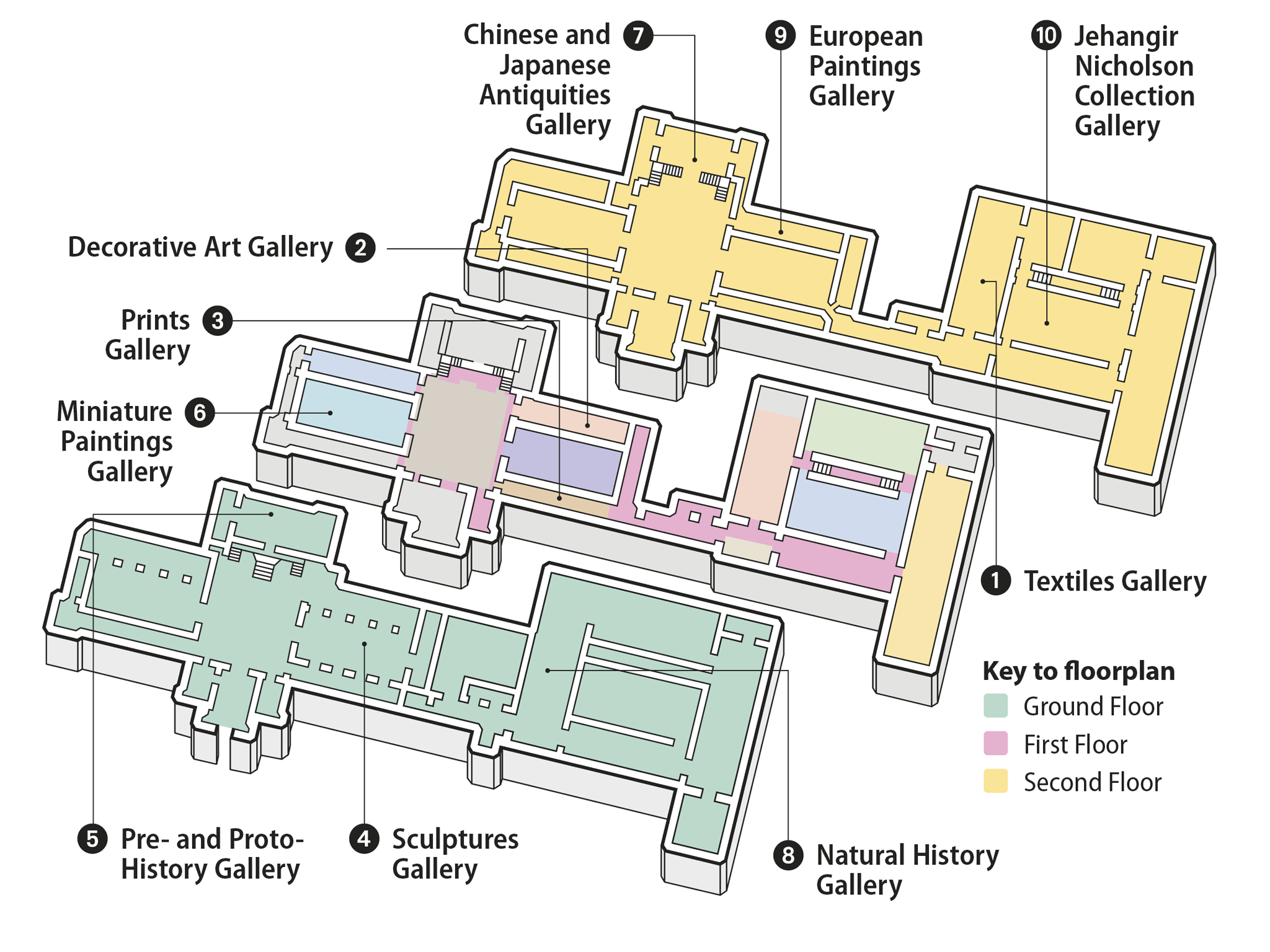
CHHATRAPATI SHIVAJI MAHARAJ VASTU SANGRAHALAYA
Considered one of the finest museums in India and renowned for its superb sculptures and miniature paintings, Chhatrapati Shivaji Maharaj Vastu Sangrahalaya boasts a rare collection of over 60,000 art objects. Housed in an iconic Indo-Saracenic building with a grand central dome and intricate detailing, the museum was designed by George Wittet. Its foundation stone was laid by the Prince of Wales (the future George V) in 1905, but it was finally inaugurated in 1923. During World War I, it served as a military hospital.
NEED TO KNOW
![]() 159–161, M G Rd, Fort Area • 022 2284 4484 • www.csmvs.in • Open 10:15am–6pm daily (ticket counter closes at 5:45pm); closed 26 Jan, 1 May, 15 Aug, 2 Oct • Adm ₹500, children 5–12 yrs ₹20, below 5s free (Indians ₹85)
159–161, M G Rd, Fort Area • 022 2284 4484 • www.csmvs.in • Open 10:15am–6pm daily (ticket counter closes at 5:45pm); closed 26 Jan, 1 May, 15 Aug, 2 Oct • Adm ₹500, children 5–12 yrs ₹20, below 5s free (Indians ₹85)
- A small outdoor café on the ground floor serves snacks and beverages.
Museum Guide
The museum has galleries on three floors. The ground floor houses Sculptures, the Pre- and Proto-History Gallery, and the delightful Natural History Section (including the Bird Gallery) with its life-like exhibits. On the first floor are Miniature Paintings, Decorative Arts, and the Prints Galleries. European Paintings, Chinese and Japanese Antiquities as well as the Jehangir Nicholson Collection are located on the second floor. Recorded tours in multiple languages are available, and there is a museum shop at the entrance of the building.

Museum Floorplan
1. Textiles Gallery
Inaugurated in 2015, this gallery highlights the rich textile heritage of India through historically significant exhibits, such as Jamsetji Tata’s infanthood jhabla-topi (tunic and cap) as well as saris from all over the country.

Garments on display
2. Decorative Art Gallery
Elegantly carved jewellery boxes, jade and copper bowls, and an ivory portrait of Thirumala Nayaka are just some of the artifacts displayed here.
3. Prints Gallery
A 111-sq-m (1,200-sq-ft) corridor showcases prints and drawings that depict the evolution of India from the 17th to 20th centuries. This gallery opened in 2014.
4. Sculptures Gallery
Sculptures from across the subcontinent can be found here, including dvarapalas (door keepers) from the 12th century that guard the entrance, and a railing pillar from a 1st-century stupa (Buddhist structure).

Part of a stupa pillar in the Sculptures Gallery
5. Pre- and Proto-History Gallery
This is a good place to get a glimpse into life during the Harappan and Assyrian civilizations, with curios, jewellery as well as toys on display.
6. Miniature Paintings Gallery
Believed to be the best miniature painting collection in the country, it is home to the folios of the Mewar Ramayana (Hindu epic) and the illustrated manuscript of Kalpasutra (Jain book of rituals).
7. Chinese and Japanese Antiquities Gallery
Relics from Chinese and Japanese civilizations, often made of porcelain, ivory, lacquer as well as hardwood, are displayed in this section. See the 18th-century Chinese snuff bottles.

Artifacts from Chinese and Japanese civilizations
8. Natural History Gallery
Housing taxidermied predators, animal-skin rugs, as well as a fascinating section on birds, the Natural History gallery is one of the most popular draws at the museum.

Bird display in the Natural History section
9. European Paintings Gallery
Boasting paintings bequeathed by Sir Ratan Tata and Sir Dorabji Tata between 1922 and 1933, this gallery features works by artists such as Bonifacio Veronese and William Strang.
10. Jehangir Nicholson Collection Gallery
A large collection of modern Indian art curated by the late Jehangir Nicholson is on a 15-year loan to the museum and is owned by a foundation set up in his name.
